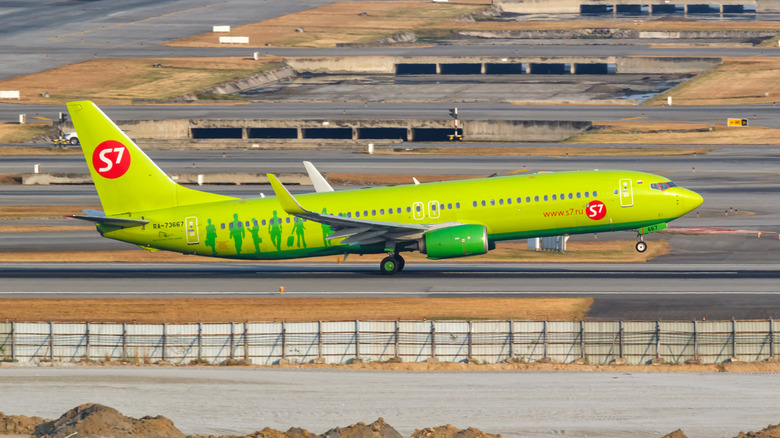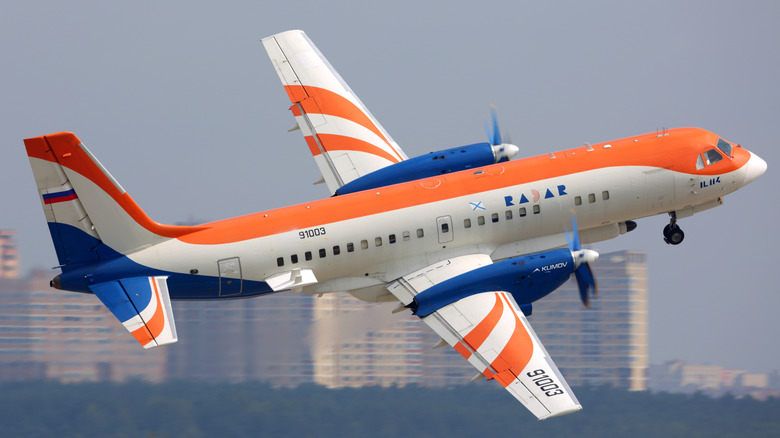Civilian airliners made in Russia are skyrocketing in value, generally practically doubling, as Western sanctions imposed in response to the Ukraine Conflict proceed to chew. Specifically, the prices of fundamental supplies and electrical parts have gone via the stratosphere, which makes Russia’s long-term objective of weaning itself off of Western planes a reasonably lengthy stretch.
The MS-21, Russia’s reply to the Boeing 737, has elevated in value practically 60% in only a yr, the Moscow Instances stories. A smaller turboprop airliner, the Il-114, is almost twice what it was only a yr in the past. Different Russian-made planes are seeing will increase of 45% and up. Inflation may be unhealthy throughout, however that is simply killer.
The Russian aviation sector is claiming that as manufacturing ramps up, economies of scale will kick in and save the day. It must be getting plenty of enterprise, at the least in its personal nation, because the driving issue right here is the truth that Russian airways can now not buy from Western firms like Boeing and Airbus. When the sanctions have been first thrown down, Russian airways merely stole over 400 such planes that they have been leasing by refusing to return them. However in the long term, Russia will need to fly its personal planes and in order to not need to cope with the West. At these costs, although, that plan is wanting much less believable.
Grey skies and grey markets
When Russia kicked off its full-scale invasion of Ukraine in 2022, Russian-made planes solely accounted for 37% of your entire Russian civilian air fleet, per the Novaya Gazeta Europe. That made the nation’s civil aviation sector vastly depending on overseas producers, significantly within the West. Certainly, total fleets needed to be grounded for lack of entry to engine components so Russia want to determine the right way to change two issues: spare components for the planes, and the planes themselves.
To construct its personal precise planes, Russia’s home trade might want to step up its recreation, which is quite a bit tougher when fundamental supplies are additionally sanctioned. For the components, although, Russia has found out just a few options, in essentially the most Russian approach attainable. First up was to easily smuggle the components into the nation, sanctions be damned. As detailed in a report by Finnish outlet Yle, there’s a practically one billion euro (about $1.2 billion) grey marketplace for Western airplane components in Russia. The trick is to purchase these components from aviation firms in different nations, resembling Turkey, China, and the United Arab Emirates. They are not purported to promote sanctioned parts to Russia, however right here we’re.
The second scheme is for Russia to only manufacture overseas components themselves, primarily making counterfeit Boeing and Airbus parts. As Politico notes, that is in violation of worldwide guidelines, which as everyone knows, are one thing that Russia deeply cares about. These components must be as dependable as, say, that counterfeit Rolex you purchased for $20. Besides they are going on planes with folks on them.
Falling out of the sky
Clearly, it is higher to make your individual planes than make faux components of any individual else’s. Except after all, your planes have a behavior of not staying airborne. The Novaya Gazeta Europe discovered that from 2000 to 2022, 80% of crash fatalities in Russia have been on planes registered within the nation (that means they have been serviced and maintained to Russian requirements, no matter the place the airplane was initially made). Would you need to get on a Russian airplane, then? Did not suppose so.
That is solely going to worsen as Russian airways fly overseas planes with faux components or home ones that reduce corners to save lots of prices. Clearly that is unhealthy for anyone who lives there, but it surely’s additionally unhealthy for any nation that also accepts flights from Russia. Although the West does not as of late, many countries within the Center East and Asia nonetheless do. A foul airplane is as prone to crash there as in its residence nation.
All collectively, the Russian civilian aviation sector is in actually turbulent climate. It has to provide plenty of new planes to interchange Western ones, however they’re each much less secure and costlier than they was once. Makes Boeing’s issues seem like clean flying by comparability.



